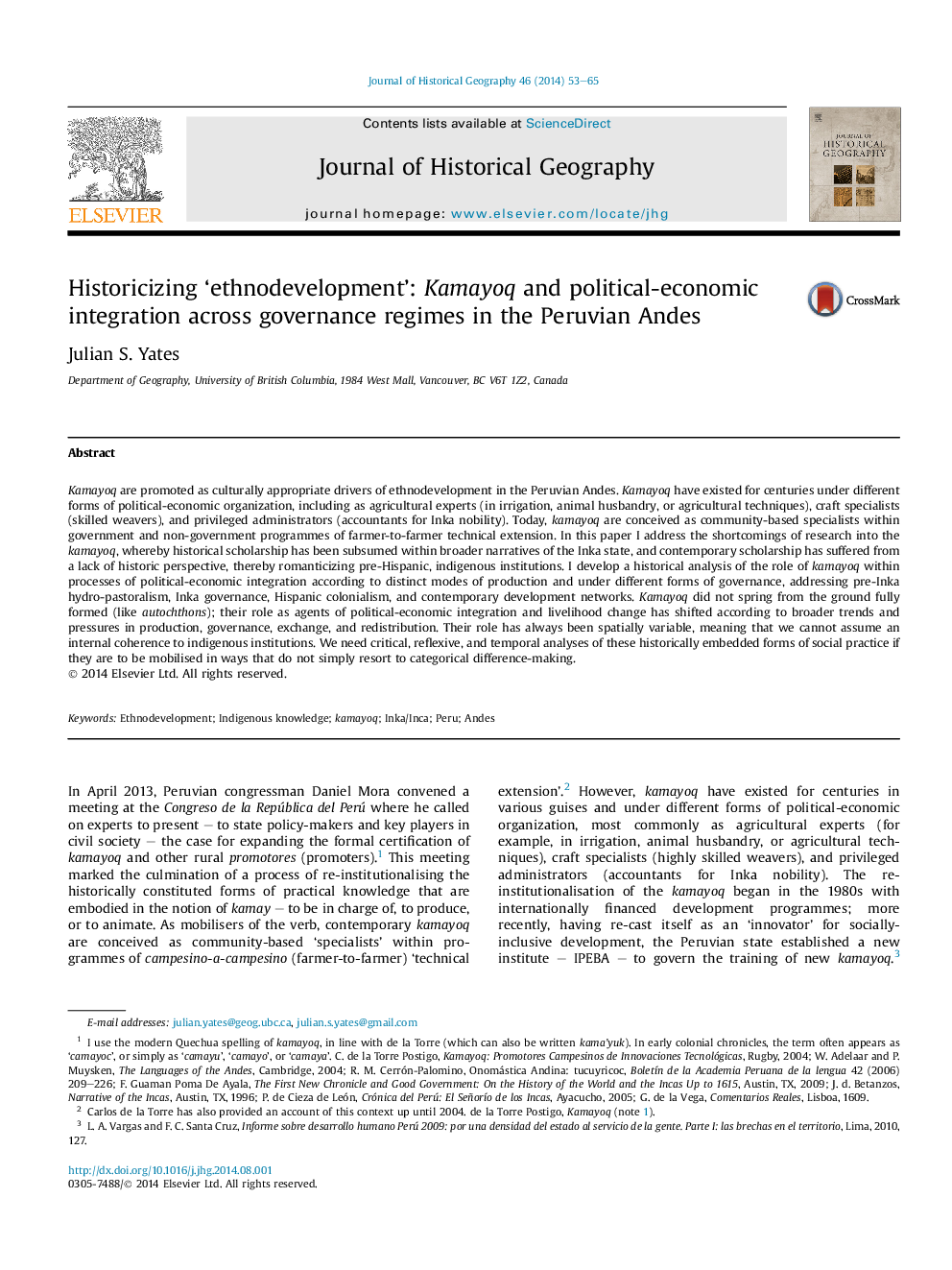| کد مقاله | کد نشریه | سال انتشار | مقاله انگلیسی | نسخه تمام متن |
|---|---|---|---|---|
| 1039035 | 1483979 | 2014 | 13 صفحه PDF | دانلود رایگان |

• Empirical insights reveal kamayoq were fundamental to Inka political economy.
• Kamayoq shifted in form and function as part of instituted political-economies.
• Contemporary kamayoq operate through and are shaped by historically constituted discourses.
• Kamayoq co-architects of spatio-temporally contingent cultural and political-economic change and integration.
Kamayoq are promoted as culturally appropriate drivers of ethnodevelopment in the Peruvian Andes. Kamayoq have existed for centuries under different forms of political-economic organization, including as agricultural experts (in irrigation, animal husbandry, or agricultural techniques), craft specialists (skilled weavers), and privileged administrators (accountants for Inka nobility). Today, kamayoq are conceived as community-based specialists within government and non-government programmes of farmer-to-farmer technical extension. In this paper I address the shortcomings of research into the kamayoq, whereby historical scholarship has been subsumed within broader narratives of the Inka state, and contemporary scholarship has suffered from a lack of historic perspective, thereby romanticizing pre-Hispanic, indigenous institutions. I develop a historical analysis of the role of kamayoq within processes of political-economic integration according to distinct modes of production and under different forms of governance, addressing pre-Inka hydro-pastoralism, Inka governance, Hispanic colonialism, and contemporary development networks. Kamayoq did not spring from the ground fully formed (like autochthons); their role as agents of political-economic integration and livelihood change has shifted according to broader trends and pressures in production, governance, exchange, and redistribution. Their role has always been spatially variable, meaning that we cannot assume an internal coherence to indigenous institutions. We need critical, reflexive, and temporal analyses of these historically embedded forms of social practice if they are to be mobilised in ways that do not simply resort to categorical difference-making.
Journal: Journal of Historical Geography - Volume 46, October 2014, Pages 53–65